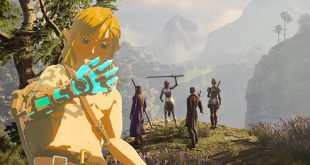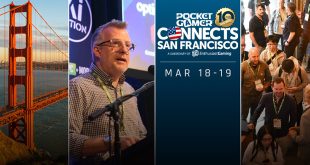It’s been around a year since you revealed the Project Skyline pipeline concept and debuted the 2012 iteration of the digital entertainment product line – a relatively long time in the games industry. How has Autodesk’s perspective on the industry evolved over that time?
One thing we’re really trying to do with games is better understand and communicate our vision for what Digital Entertainment Creation – or DEC – means for games.
Back then Project Skyline was a technology where we started to talk about a games market today where – not unlike film – things have been getting more complex and people are wanting to do more on the same budget.
They want more interesting gameplay – and despite the rise of social gameplay they still want ever better graphics, whether that’s on a console or some sort of MMO game.
Me personally, I think what you’re going to see happen is that in the rise of these successful social gaming platforms where the differentiator is the social aspect of the game, as more show up and where there’s more competition, people are going to want to stand out.
That will be through, again, gameplay and graphics; the things that make console games successful.
Before that change, we used to see three tiers in the industry; the triple-A developer at the high-end, and then the mid-tier developer that was seen as doing ‘double-A’ games, and then the casual and lower-spec games.
We’re seeing the middle segment going away now, and publishers are spending a lot more on investing in key franchises.There’s less taking of chances, but there is more investment in that casual space down at the lower end.
The middle tier are either climbing up to those triple-A games, or they are splitting into smaller newly made studios targeting the casual and mobile market.
So how is that reflected by what Autodesk offers developers?
What’s good about that change is that now, at the top, there is even more complexity and even larger teams, and that’s where our tools can help.
And with a lot of those middle-tier developers going both ways; they already knew our tools, and they are starting to take that knowledge and our tools down into those segments.
What we’re looking at when we’re talking about what DEC means for games is not dissimilar from the Skyline message.
We’re allowing a workflow where people can work more smoothly from their art creation all the way out to where they are putting out content on their runtime device. It’s about creating an iterative workflow.
With DEC we’ve been asking ourselves how can we help games developers with this workflow where they can continually create their art, see how it runs in game, and then change their art accordingly, without it being a super-heavy, complex process.
And you’re talking about a process suitable for each tier of that spectrum?
I couldn’t say Autodesk really invented this. The larger games developers have been doing this on their own. They don’t have a choice but to solve these problems.
Everyone in that space is trying to solve these problems in a similar way, and then down market there are developers who don’t have the luxury of large teams to do this for them.
That means that there’s a way Autodesk can help everybody. I feel ‘democratised’ is a bit of an overused term, but we can help standardise these workflows and help bring them to a wider group of people.
You mentioned the Project Skyline pipeline concept. Where is that today? Is it a finished product yet?
Most of this stuff is still under confidentiality with the specific companies we have been working with. We’re even exploring what the workflows of the next-gen are.
We’re looking at the Wii U coming out, and while I can’t confirm anything, everyone keeps hearing about other consoles potentially coming out.
We’re working with some developers – I want to call them charter customers, because it’s not really a beta we’re doing; it’s a collaboration where we learn together as we go.
We have it, and a year ago we had it, and we’ve got it so people can play with it, and it’s integrated with their pipelines.
But we’ve really done it as a next-gen pipeline and not for current-gen pipelines, which is kind of done, where people are crunching on timelines and money and don’t have the opportunity to change things.
Skyline is about what would make a better pipeline for next time, and we’re engaging with a couple of our customers on it. They are helping us with what next-generation pipelines should be like, in terms of what we think they should offer, but also in terms of what they really need to be in practice.
It’s part of the same approach to the way we do things when, for example, we picked up Scaleform.
So how does the acquisition of a UI company tie in with a vision like Skyline?
Interface – like workflow – for games development is only going to get more important as we move forward, and how we can build that out into a nice neat workflow is important.
Skyline was actually about animation, but we are looking at how we can take not just animation but UI, or maybe building environments, or whatever it may be, and apply the same logic to it.
So we’ve been looking at all sorts of things like that – we made another acquisition of a company called Grip here in Montreal. They do higher-level behavioural technology. Grip have done the AI systems in some pretty successful triple-A titles.
We’re kind of getting enough pieces there so that people will be able to apply these workflows to different disciplines across the gaming pipeline.
But we’ll also continue to stay open enough, because we know there are people that still have their own technology that they developed.
We still live in a world where the majority of people use in-house custom technology, versus the ten or 15 per cent of the market that choose to buy off-the-shelf engines.
Will we see Autodesk make or acquire an engine in the near future?
For us that’s a tough place to be in, due to the fact that there are so many people that use so many solutions and there seems to be no ‘one size fits all’. Making a commitment like that would exclude us from a large part of our customer base today.
What can Autodesk video games customers expect from you at GDC 2012?
Well, back at MIGS last year we launched our Gameware brand and website. What we wanted to do in creating that is build a direct channel to games developers to address the programmers more directly.
That kind of came from the fact that Scaleform had a great website where developers could go and get information, get technical support and all sorts of product information and trials.
What we’ve done is take all of our middleware products – things like Human IK and Beast, and the Grip products are going up there, and then there’s Kynapse – and we’ve built them into this nice neat environment we’ve branded Gameware. It’s going to continue to grow as our focus site to talk to the games development community.
As Skyline matures, and as we move our technologies from being middleware to being a whole workflow from which you can create your content out to the runtime, we’re going to continue to grow that site and continue to grow the investment there. There will be a wider launch and more from Gameware at GDC.
Also at GDC, well, you can take your best guess. We’re going to have, or definitely would hope to have, some supporting new releases of the middleware products.
I can’t confirm that 100 per cent and tell you what products and what releases and everything, but we’re going to show up with a strong line-up and a very clear message to the community that we’re investing a lot here.
At GDC we’ll also have some news for the casual and mobile space, and that remains a great area of interest for the business, both at GDC and throughout the year.

 MCV/DEVELOP News, events, research and jobs from the games industry
MCV/DEVELOP News, events, research and jobs from the games industry



